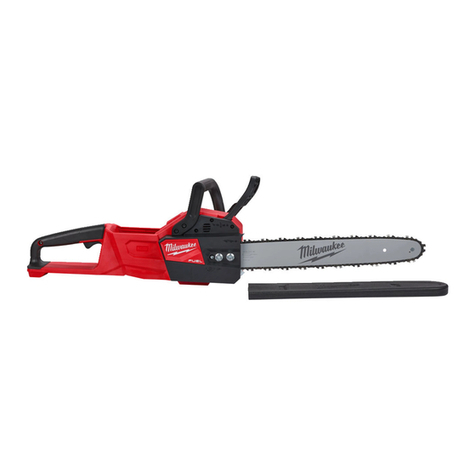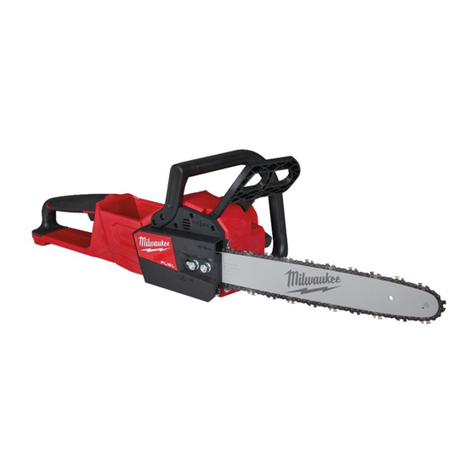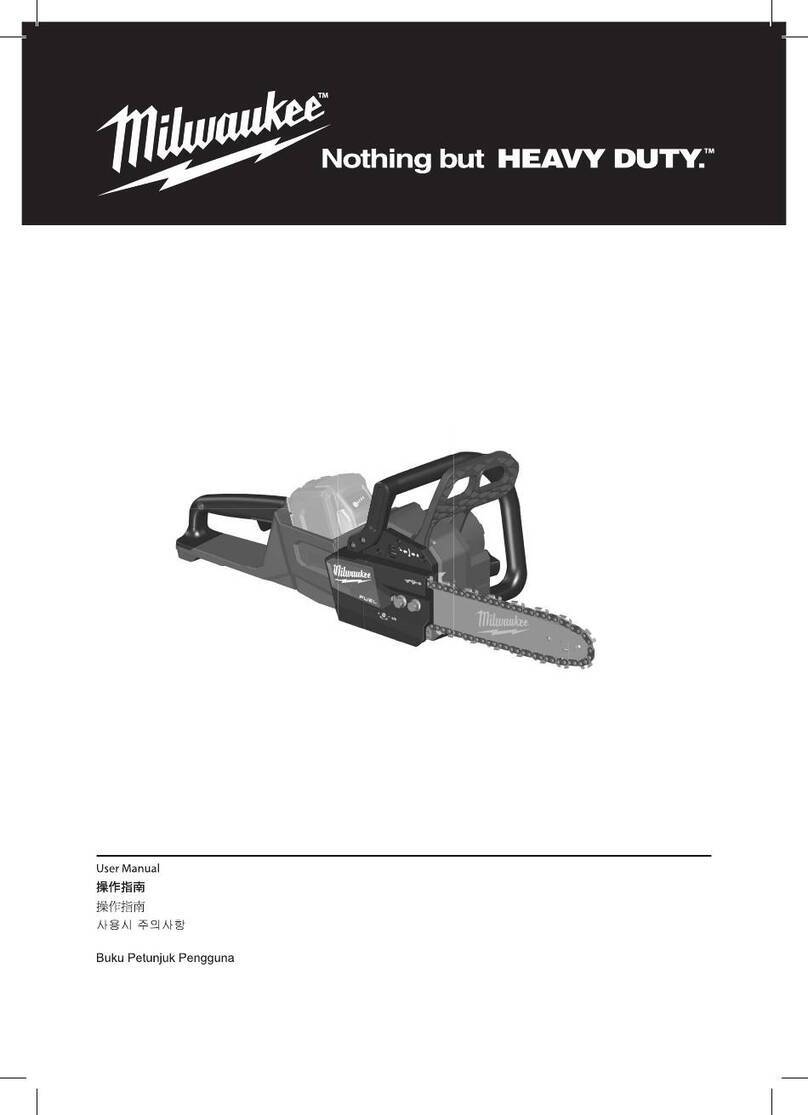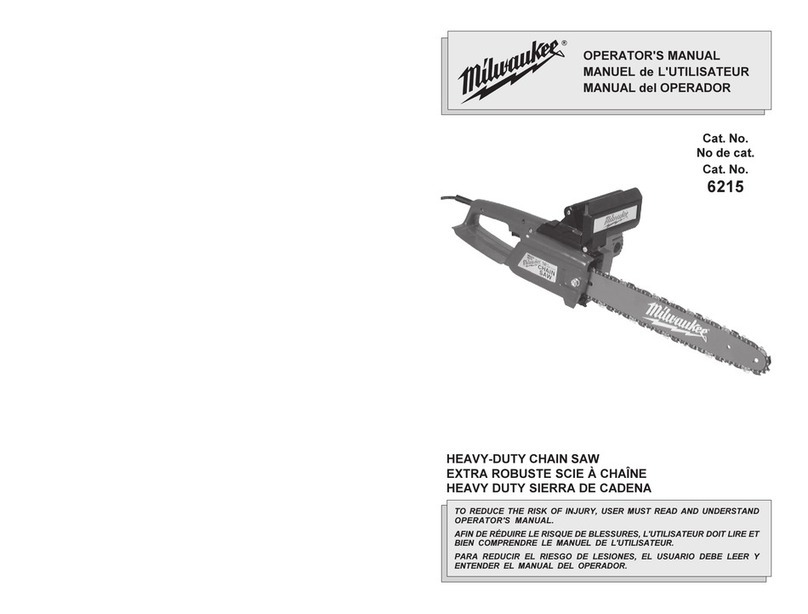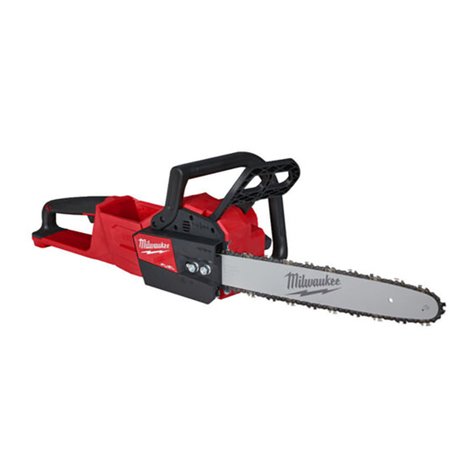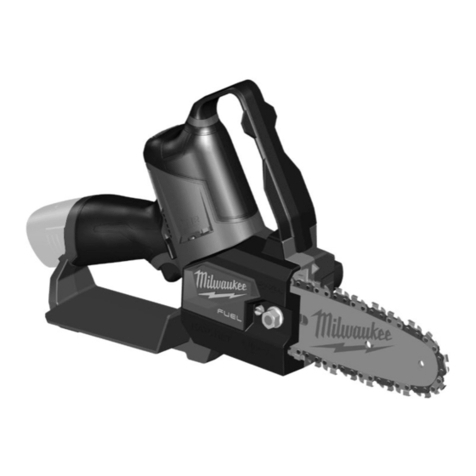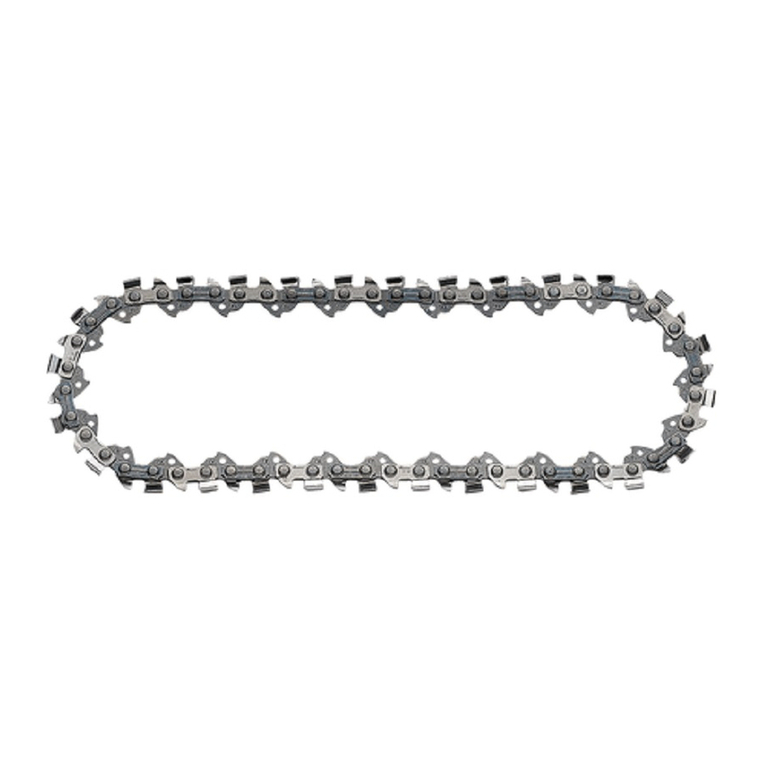
3
•Under abusive conditions, liquid may be ejected
from the battery; avoid contact. If contact acci-
dentally occurs, ush with water. If liquid contacts
eyes, additionally seek medical help. Liquid ejected
from the battery may cause irritation or burns.
•Do not use a battery pack or tool that is damaged or
modied. Damaged or modied batteries may exhibit
unpredictable behavior resulting in re, explosion or
risk of injury.
•Do not expose a battery pack or tool to re or ex-
cessive temperature. Exposure to re or temperature
above 265°F (130°C) may cause explosion.
•Follow all charging instructions and do not charge
the battery pack or tool outside the temperature
range specified in the instructions. Charging
improperly or at temperatures outside the specied
range may damage the battery and increase the risk
of re. SERVICE
• Have your power tool serviced by a qualied repair
person using only identical replacement parts.
This will ensure that the safety of the power tool is
maintained.
• Never service damaged battery packs. Service
of battery packs should only be performed by the
manufacturer or authorized service providers.
SPECIFIC SAFETY RULES
FOR CHAIN SAW
General chain saw safety warnings:
•Keep all parts of the body away from the saw chain
when the chain saw is operating. Before you start
the chain saw, make sure the saw chain is not
contacting anything. A moment of inattention while
operating chain saws may cause entanglement of your
clothing or body with the saw chain.
•Always hold the chain saw with your right hand
on the rear handle and your left hand on the front
handle. Holding the chain saw with a reversed hand
conguration increases the risk of personal injury and
should never be done.
•Hold the chain saw by insulated gripping surfaces
only, because the saw chain may contact hidden
wiring. Saw chains contacting a "live" wire may make
exposed metal parts of the chain saw "live" and could
give the operator an electric shock.
•Wear eye protection. Further protective equipment
for hearing, head, hands, legs and feet is recom-
mended. Adequate protective equipment will reduce
personal injury from ying debris or accidental contact
with the saw chain.
•Do not operate a chain saw in a tree, on a ladder,
from a rooftop, or any unstable support. Operation
of a chain saw in this manner could result in serious
personal injury.
•Always keep proper footing and operate the chain
saw only when standing on xed, secure and level
surface. Slippery or unstable surfaces may cause a
loss of balance or control of the chain saw.
•When cutting a limb that is under tension be alert
for spring back. When the tension in the wood bres
is released the spring loaded limb may strike the
operator and/or throw the chain saw out of control.
•Use extreme caution when cutting brush and sap-
lings. The slender material may catch the saw chain
and be whipped toward you or pull you o balance.
•Carry the chain saw by the front handle with the
chain saw switched o and away from your body.
When transporting or storing the chain saw always
t the guide bar cover. Proper handling of the chain
saw will reduce the likelihood of accidental contact
with the moving saw chain.
•Follow instructions for lubricating, chain tension-
ing and changing the bar and chain. Improperly
tensioned or lubricated chain may either break or
increase the chance for kickback.
•Cut wood only. Do not use chain saw for purposes
not intended. For example: do not use chain saw
for cutting metal, plastic, masonry or non-wood
building materials. Use of the chain saw for opera-
tions dierent than intended could result in a hazard-
ous situation.
•Do not attempt to fell a tree until you have an un-
derstanding of the risks and how to avoid them.
Serious injury could occur to the operator or bystand-
ers while felling a tree.
Causes and operator prevention of kickback:
Kickback may occur when the nose or tip of the guide
bar touches an object, or when the wood closes in and
pinches the saw chain in the cut.
Tip contact in some cases may cause a sudden reverse
reaction, kicking the guide bar up and back towards
the operator.
Pinching the saw chain along the top of the guide
bar may push the guide bar rapidly back towards the
operator.
Either of these reactions may cause you to lose con-
trol of the saw which could result in serious personal
injury. Do not rely exclusively upon the safety devices
built into your saw. As a chain saw user, you should
take several steps to keep your cutting jobs free from
accident or injury.
Kickback is the result of chain saw misuse and/or in-
correct operating procedures or conditions and can be
avoided by taking proper precautions as given below:
•Maintain a rm grip, with thumbs and ngers en-
circling the chain saw handles, with both hands on
the saw and position your body and arm to allow
you to resist kickback forces. Kickback forces can
be controlled by the operator, if proper precautions
are taken. Do not let go of the chain saw.
•Do not overreach and do not cut above shoulder
height. This helps prevent unintended tip contact and
enables better control of the chain saw in unexpected
situations.
•Only use replacement guide bars and saw chains
specied by the manufacturer. Incorrect replace-
ment guide bars and saw chains may cause chain
breakage and/or kickback.
•Follow the manufacturer’s sharpening and main-
tenance instructions for the saw chain. Decreas-
ing the depth gauge height can lead to increased
kickback.
•Follow all instructions when clearing jammed
material, storing or servicing the chain saw. Make
sure the switch is o and the battery pack is re-
moved. Unexpected actuation of the chain saw while
clearing jammed material or servicing may result in
serious personal injury.
Other Chain Saw Safety Rules
•Do not start cutting until you have a clear work
area, secure footing, and a planned retreat path
from the falling tree. Cluttered areas invite accidents.
•Keep ALL children, bystanders, visitors, and ani-
mals out of the work area while starting or cutting
with the chain saw.
•Dress Properly - Wear snug tting clothing. Always
wear heavy, long pants, long sleeves, overalls, jeans
or chaps made of cut resistant material or ones that
